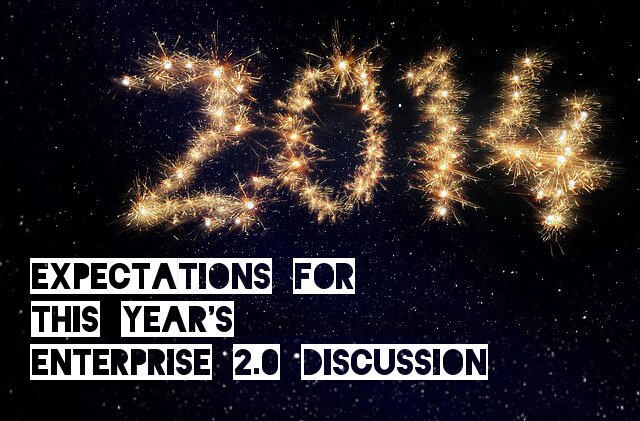
“For last year’s words belong to last year’s language. And next year’s words await another voice.” – T.S. Eliot, Four Quartets
As the new year is still fresh we are happily looking forward to this new year’s evolution in the “social business/enterprise” sphere. And to go with the quote of T.S. Eliot we will also still not argue whether “social business is dead” or still alive – but instead try to proceed with a more distinguished discussion on how to drive the business by the support and enablement of social initiatives.
Therefore I have put together some expectations about to where the discussion must/will evolve in 2014:
Support for a stronger alignment of social initiatives with the business
While the call for a stronger alignment of social initiatives with the “business” is as old as the idea of the Enterprise-wide social networking approach, the advancements in this matter are not yet remarkable. Most of the projects/initiatives are running “above the process” and providing unintentionally accountable value to the organisation. This is also often the reason why experts are declaring the “social business” thing as dead – as it is still running as a “siloed” approach with the idea of revolutionizing the internal communication and knowledge sharing routines and thus consequently producing value for the organization. As this approach is certainly achieving its results – the results are still very low-level and in many ways with unintentional higher impact to the value creation process of the company.
As described in an early post we can identify some new kinds of projects that are more driven by business objectives. But while these projects are already driven by a more holistic idea of social as an enablement for some business development objectives, the integration of social in the process is also for this kind of projects only low-level.
A more process-orientated discussion in this matter is held by the BPM and Case Management community in regards to the social enhancements of the “adaptive case management” concept. Reflections on this topic are mainly driven from the “IT Service Management” people. Authors like Hamid R Motahari-Nezhad (IBM Research) or Keith D Swenson (Fujitsu) are at the heart of this discussion. They are discussing the enablement of social and collaborative enhancement towards the definition, adaptation and enactment of case processes. They also explore the possibilities of the integration of social networking to offer mechanisms for capturing and formalizing feedback into the case, process and artifact definitions.
The different levels of the unification of social and business processes is nicely visualized by Marco Brambilla in a blog post back in May 2011: The continuum of Social BPM

While the “closed BPM” and the “siloed ESN” were the ideas of yesterday, this year’s discussion must push forward the stage of the “participatory” and “social enactment”. We will therefore start an interview series on this to further explore the challenges and the potentials in this area. At the Enterprise 2.0 SUMMIT we have invited João Pinto dos Santos from Accenture to give us an BPM/ACM-related view on social. Paired with a more ESN related perspective to this topic from Bertrand Duperrin from Nextmodernity this session certainly will provide some insights.
A more differentiated discussion about the roles and tasks for the E2.0 project management
A second topic that I like to see evolve is the discussion about the differentiated tasks and roles for the project management of “E20/Social Initiatives”. As the projects need to be driven from inside of the organization we need to define accepted job descriptions for people working on these projects.
There are various understandings and definitons about the E2.0 project manager, the adoption manager, the internal community manager and so on. From the discussions at our conferences and with a German working group on internal community management I have develop the idea of five different roles in the E20 project:
- Project Lead for the E2.0/Social Initiative: This person is in charge for the overall progress and success of the project. He/she should overlook the different activities for the adoption and cultural change. This role likely reports to the management board – mainly on achieved business goals with the enablement of the social initiative.
- Community Management Competence Lead: This person is in charge for the long-term engagement and community life. He/she is driving the adoption process, helping people to build up social skills and engage in a collaborative working culture as well as to use the social platform as an enabling tool in order to achieve the defined business objective. He/she is keeping track of the community activity in terms of quantitative measures and is taking actions to re-assure the relevance of the community structure.
- Guides & Advocats: These persons are having a supporting role in justifying and promoting the collaborative working culture in the organization. They are either subject-matter experts (SMEs) to provide relevant information on the platform or process experts to identify and promote a business process or project being organized in a collaborative working mode.
- Connectors: These persons help to connect relevant people on the platform to assure the diversity of the network structure.
- Community Management Enabled Project/Process Manager: This role may vary as an additional task to a project or process manager or a specific job role for larger communities. This task consists mainly of the daily operational “keeping alive” activities in a specific community. In many ways these are just normal project management skills – added with a specific sense of “digital empathy” to understand the contextual background of social interactions in digital environments.
So while the last role might seem to look like the most important one, for me it is not. For me the most critical role to the success of the project is the “Community Management Competence Lead” – the spin-doctor for the community activities. Only a few E2.0 initiatives have installed these positions as a full-time amd fully legitimated job position what might be a reason for a lot of stagnation in the progress of the social initiatives.
From an I have extracted the following key tasks for this role:I am looking very much forward to the discussions of the session with Rachel Happe and Claire Flanagan at the Enterprise 2.0 SUMMIT that is addressing this aspect as a key question.
Advancements in the understanding of the design of the 21st century organisation
A third subject that needs to be penetrated in order to advance the “social business/enterprise” outcome is the idea of the design of the 21st century organisation. Many talks have pointed out that the age of the hierarchical “Command & Control” system is overdue. But only a few ideas and recommendations are defined to outline the organizational design of the future. In general everybody agrees on a network orientated model with leadership and authority defined by knowledge and competences and supporting the open flow of information and therefore ideas and innovations. Jon Husband is calling it the “wirearchy” model – an emergent organizing principle in which advancing ideas and innovation are being championed throughout a channel of “time, energy, authority and resources to testing those ideas and the possibilities for innovation carried in those ideas”.
The BetaCodex model is one of this new design models following this general principles. The Holacracy model is another one. Just recently Zappos made an announcement on going holacratic.
At the Enterprise 2.0 SUMMIT we are going to discuss the principles and challenges for these new network orientated designs with talks by Lee Bryant and Bernard Chiquet.
Concluding on my expectation for 2014 my hopes for this year’s discussion are keyed around a more systematic and differentiated approach. With the Enterprise 2.0 SUMMIT as the start for the E20 conference circus we are very much working on delivering a first contribution to this expectation and are very much looking forward to it.

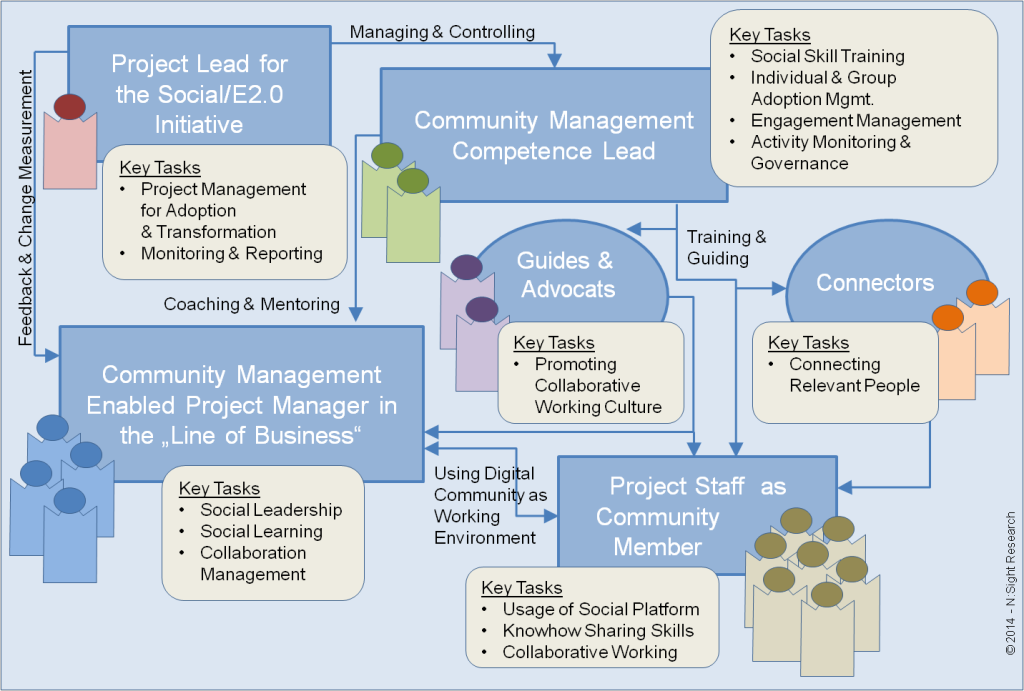

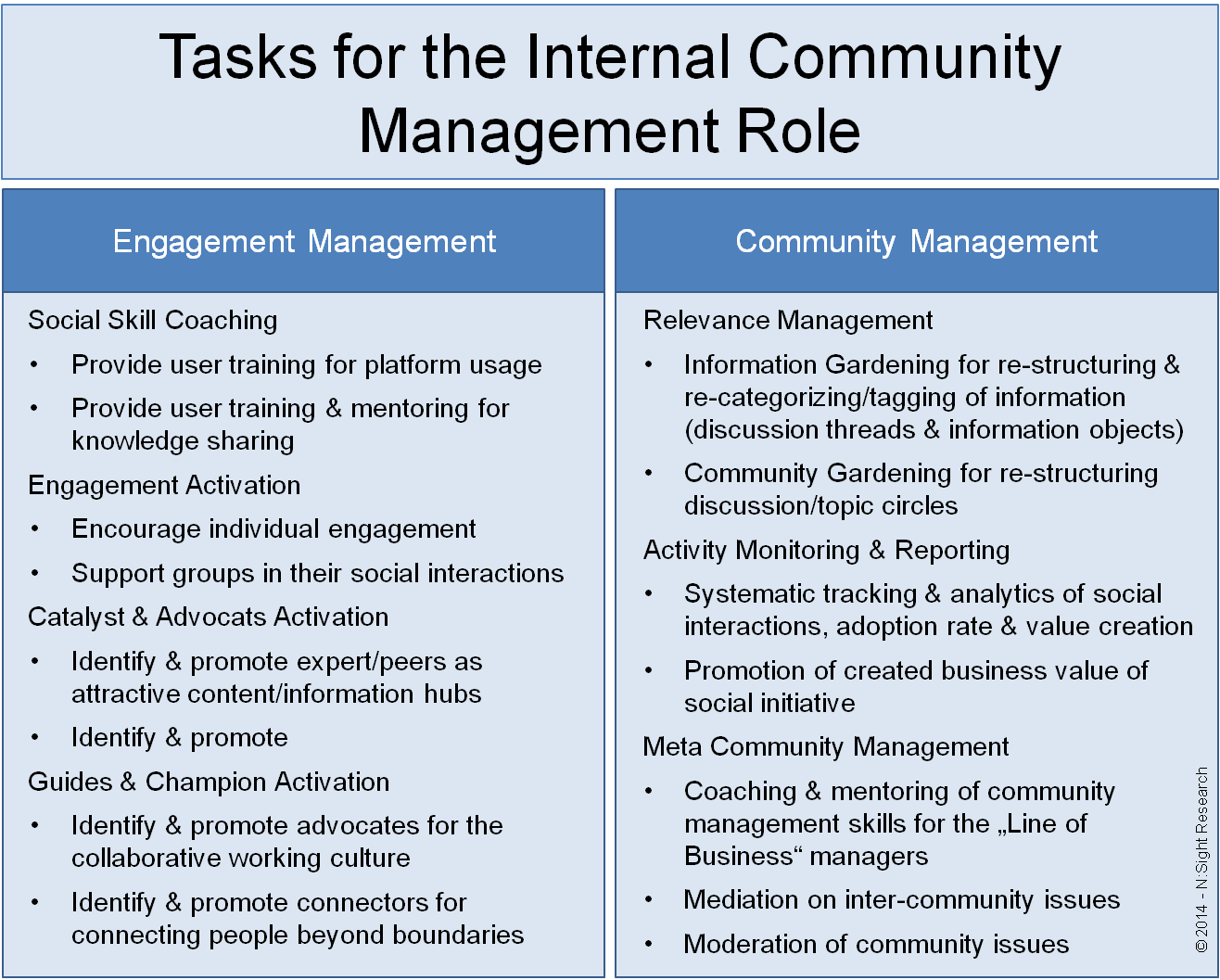

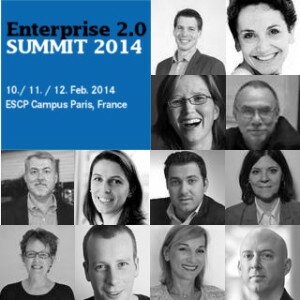




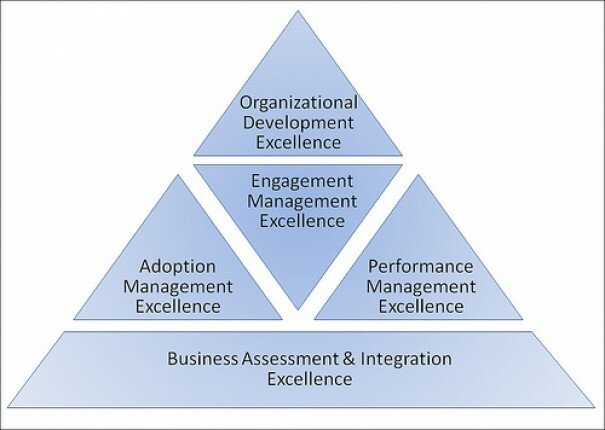



I din’t think you can transform behaviour and business outcomes if you cannot see the limitations of existing organisational structure and culture, and thanks to social, connective technologies, we now have the opportunity to re-invent how we structure and organise our work.
And therefore – in order to guarantee the long-run of the project/initiative it needs to support business objectives and goals in the meantime by stronger “aligning” to the existing processes, it needs some kind of “ceremony master” or “spin doctor” that keeps the activity in this social, connective environments alive (while still bounded to the old system and hierarchy) and it needs a clear understanding of the pillars of the new system aka 21stC org design.
So yes – the companies have to re-invent their structures and value creation for the future but still need to operate successfully today.
I wonder about the overall strategy for introducing e20 into the organisation – you talk about 10-20 yrs transition, I see most e20 tool vendors take the small group approach (small fractions of the organisation applying soc business practices/tools and hope it spreads to the rest of the organisation – see http://www.businessillustrator.com/infographic/how-to-introduce-yammer-in-your-organisation-guide-to-internal-communications-people/).
Is this the best approach? If we know it’s so good for business, why be so careful? How about when ERP systems were introduced – that was a forceful/pervasive approach – organisation had to adapt to ERP system and business processes were created around the IT system. Why not so this time? McAfee said: “I believe that ESSPs [ Emergent Social Software Platforms ] will have about as big an impact on the informal processes of the organization as large-scale commercial enterprise systems (ERP, CRM, Supply Chain, etc.) have had on the formal processes.” If it is such big of a deal, or perhaps bigger, even more complicated/comprehensive, then why wait, why not take a pervasive , massive approach? And get some good healthy turn around. Of course after careful planning, but it needs to come into the main stream of business strategy and planning with good models for ROI.
The small steps approach is firstly due to the emergent characteristiscs of social technology. While the benefit of a digital ERP process is a priori understandable, the benefit of social collaboration is not. At first sight it is more work for the individual to also documentate his/her doings on the social networks and “to work out loud”. The individual must first “experience” that he/she will get more out of the network than he/she spends efforts on putting something into the network. Therefore we need so small incremental steps on bringing one group by the other to the network – starting with the already “experienced” and “self-motivated” ones to reach fast the tipping point when we have enough interactions on the platform to give instantly positive feedbacks to new users.
As a second “problem” with social technology we have to take into account – the Yin factor that goes along with emergent adoption of the technology and that even calls for more disruptive change on the organizational structure (see my explanation of the Yang and Yin of social technology: https://enterprise20blog.com/2012/07/02/thinking-about-the-secret-sauce-for-the-enterprise-2-0-project-management/). If this call is too pervasive and massive this will kill the “transformation” because of the natural opposing forces within the system (like the middle management and so on). In regards to this also we have to say that an existing system (aka organization) is only capable with – what we say in German – “homöopathische Dosen” (homeopathic doses) of change.
Looking forward to your or also Lee’s thoughts on this.
Of course it’s against e20 philosophy/nature to force any system upon the organisation – one characteristic/point of e20 being that finally system can adapt to how people actually work, rather than the opposite. And here we come to one point: Is it so that some processes imposed by not-collaborative systems introduced earlier have festered some in-effective practices that actually hinders 2.0 introduction and need to be unlearned?
We also know processes only captured certain operations , lots of activity, exceptions and communication happened outside the processes, often with no feed-back loop to include exceptions in updated process. Now with e20 we have the chance to both form system after the way people work and capture communication outside process, linking it into the process.
So it should be taken into consideration that people are so stuck in e10 (ineffective/half-truths) processes and how these work patterns actually hinders e20 introduction. Here is where we need a healthy shake-up. Why should that be taken gradually? Why not a massive big bang like we did with ERP introduction? It’s best for them and unlike some ERP introductions, it will make them more effective, it will feel better and better – they will come to love it.
Of course (some of us) need to know the benefits up front and do we not by now have some good ROI models for social business to put into a business case. It shouldn’t be that much harder than justifying ROI on business process introduction
About extra work in “working out loud”, let’s start where they are now. They write emails, they write meeting notes and minutes. Teach them the benefits of writing these stuff in a more collaborative (and information-friendly) environment than Outlook and Word/DMS, or integrate/direct Outlook messages to the collaborative system and gradually let them taste the sweet flavor of true collaborative environment. When people discover how more effective and communicative they can be in such an environment, with information gathered in one web environment in stead of scattered in multiple applications (see: http://roii2.wordpress.com/2011/07/09/to-make-the-knowledge-worker-productive/), the adaption will happen sooner than later. They will say: “What took us so long to come here”? Meaning – the work pattern in 2.0 are much more intuitive and matching the way people actually work and think than in 1.0 . And the non-collaborative environment/tool-set in 1.0 process introduction has actually been a detour.
First , I realize the thorough and foundational work done and referred to in both this article and your previous ones are much more thought through and mature (perhaps) than what I express here. Still I think it’s worth asking the questions.
Second – if necessary, let me explain why I say “detour”.
1) See http://ispent2.blogspot.no/2009/03/whatever-happened-to-web.html. This was back in 2006 from then Burton Group Research Director Peter O’Kelly: Microsoft could have seized the opportunity to already then taught us the benefit of collaborative web environment. In stead they continued to push the print/file-centric MS-Office environment with the old typewriter metaphor – and the world came to a stand-still.
2) ERP business process introduction only had business data focus, not people (communication) focus – actually forcing a less collaborative and communicative environment than was before process introduction.
Though you make me thinking I still cannot fully agree on your points. While starting new on a green field might avoid the transition problems, it still will not guarantee that the organization will be able to fulfill its process obligations in the meanwhile. Therefore – in order to guarantee that the organization still contributes to the business value creation while transforming towards a new way of working – I still think that the gradual and systematic transition/transformation process might be for the most projects the best one.
As far as my understanding of the organizational development theories goes – the more radical approach – that you are talking of – always depends on strong leadership roles within the organization – as set for example in the Holacracy model (https://enterprise20blog.com/2014/01/09/holacracy-logical-step-evolution-organization/) and a strong purposeful driven approach. If you can guarantee this on the whole extend of your organization, certainly the radical move will be a faster way to the change.
Regards. Bjoern